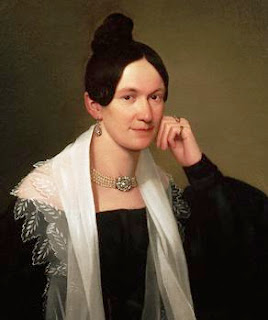The parents of Franz Schubert and those of Thérese Grob had known each other since they were young. They were neighbors in a suburb of Vienna –Liechtental– so the children of both families did play together, jumping and running one after another for much of their childhood. So, in the heat of those children's games, little Franz must have noticed the beauty of Thérese –a magic moment that history does not register.
Two years younger than Franz, as Thérese reached thirteen she was revealed to possess a beautiful soprano voice. In 1814, barely grown up, both will perform together on-stage at the premiere of the Mass in F for vocal quartet, organ and orchestra of the young master. Schubert, aged seventeen, conducts; Thérese, fifteen, is the soprano soloist.
All this was fine, but the girl's parents truly believed that the relationship had no future because Franz was just beginning an uncertain career as a musician and it was unthinkable that he could achieve any reputation in the short term.
As if all this were not enough, Klemens von Metternich, the champion of conservatism in charge of the security of Vienna and all of Austria, had recently issued a decree prohibiting marriage if the future husband had no means of supporting his wife. As was exactly the case.
Three or four years of vain attempts will follow. Schubert will try to obtain a position as Kapellmeister or as director of some of the great Viennese theaters, but it was all to no avail.
Eventually, the parents of Thérèse will find a promising suitor for their daughter in a man employed as a baker. "At least there will be no lack of bread on the table", Madame Grob is reported to have said.
They will contract the sacred link in November of 1820. Little Franz is sheltered inside the house of the poet Mayrhofer, with his heart broken in pieces.
Impromptus Opus 90 No. 4
This is the last of this series. It is marked allegretto, that is, fast but not too much. The introductory and main theme is articulated in descending arpeggios, that fall in cascade having some gentle chords as a response. After the natural development of this idea the central section begins, where the arpeggios have been replaced by chords that hold a melody with a certain air of lament or imploration. Then returns the main theme which is repeated exactly the same as before until the two chords marked forte appear with which the piece ends.
.................................................................................................................................
Dear visitor, if you like this article, we'll be very thankful if you share it on Facebook or Twitter, or recommend it to Google with an easy click

No comments :
Post a Comment